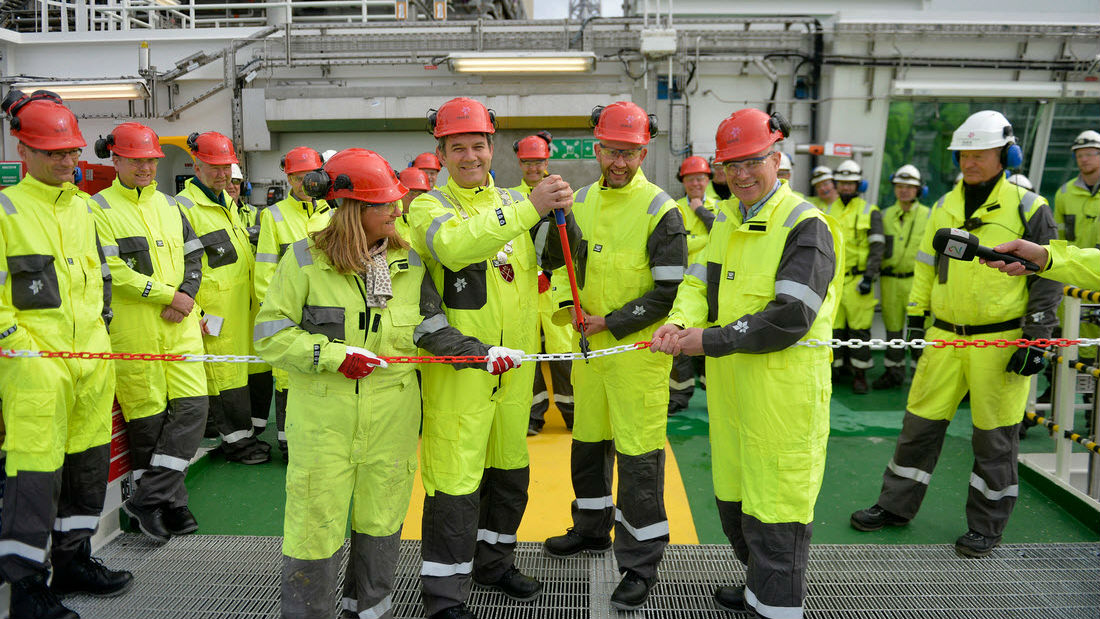Statoil Doesn't Want to be "Bipolar"

Norway's Statoil is cutting investments less than any other oil major this year, positioning for a crude price recovery but taking a risk should the slump be protracted.
By continuing to spend on projects that won't start making returns for up to a decade, the state-controlled energy giant hopes to sidestep the kind of boom-to-bust cycle often seen in the oil sector. Crude oil prices halved last year.
"We as an industry tend to have a permanent bipolar disorder. We are either euphoric or depressed," Statoil Chief Economist Eirik Waerness said.
"Maybe this time it will be slightly different and this will allow us to look through the cycle."
The strategy reflects Norway's tradition of long-term thinking and also some pressure to maintain work from the country's powerful regulator.
But it is not without risks. If crude prices recover quickly, Statoil will be better positioned to resume growth, but a long period of cheap oil could increase debt and hurt its credit rating, and force the company to slash dividends.
According to industry-wide budgets finalized this month, Statoil plans to cut spending by eight percent this year while rivals slash by an average of more than 20 percent. Its spending on exploration will fall just nine percent, even though an offshore discovery won't produce oil for eight to 10 years.
In Tanzania, Statoil recently took over a well stake from ExxonMobil and drilled alone when its partner declined to go ahead with the project.
It is also continuing expensive Canadian and Gulf of Mexico exploration programs and has just started construction on the Arctic Asta Hansteen field, a low-margin deepwater gas project that also requires a 480 kilometer pipeline.
"Statoil is taking a long term view, which is part of the broader Norwegian attitude to oil and gas. That this is our gem and we'll use it wisely," said Alex Griffiths, the head of oil and gas research at ratings agency Fitch.
Rivals' approaches differ. Royal Dutch Shell is slashing spending by 16 percent this year after a 20 percent cut in 2014 and aims to lower its average cost with a $70 billion takeover of Britain's BG.
Statoil has some advantages over its rivals. The firm is majority-owned by a triple-A-rated state and has relatively little debt, meaning its borrowing costs are among the industry's lowest.
It is willing to live with lower margins than rivals and is more open to new technology that improves efficiency over time.
Top shareholder Norway is also very patient while its regulator can be assertive. It told Statoil this month that it could not halt the small Trestakk project in the North Sea because of low oil prices, as the investment was time-critical and stopping would be illegal.
"Oil firms know they have an obligation towards the Norwegian people to be allowed to reap and harvest the resource on the continental shelf," oil minister Tord Lien said. "There are obligations toward owning licenses."
Unlike other nations, Norway gives away licenses for free and provides big subsidies for exploration and development. Companies in return commit to certain spending and pay the world's highest oil tax at 78 percent once production starts.
Offering a carrot, Lien said the state would consider subsidizing another stalled Statoil project.
SHARE RISK
Investors are not yet convinced by Statoil's approach. Despite a generous dividend, Statoil shares are down 11 percent over the past year, underperforming a two percent fall on the European oil and gas index. In dollars, the fall was a massive 32 percent.
The relatively small cut in investment and high dividend will eat into earnings this year, so that the stock remains "sensationally expensive" even at these lower levels, Swedbank analyst Teodor Sveen-Nilsen said. On a price-to-earnings basis, he estimates that Statoil is more than 20 percent expensive than rival shares.
"(Risk) can be boiled down to two things: the balance sheet is going to weaken, risking dividends being cut and its credit ratings lowered," John Olaisen, an analyst at Oslo-based ABG Sundal Collier said. "I think both scenarios are very likely."
Statoil has, like rivals, also suspended projects from Canadian oil sands to the Norwegian Arctic, and initiated a $5 billion cost-reduction program that involves layoffs.
But it has given the go-ahead for development of the $29 billion Johan Sverdrup field, Europe's costliest oil investment.
"All companies on the stock exchange are pressured by shareholders to cut cost and they can't see beyond their noses," said Hege Kverneland, chief technology officer at oil service giant National Oilwell Varco.
"Statoil has the possibility to look further and say, yes, it's a downturn, but we've been there before, it's going to come up again."
